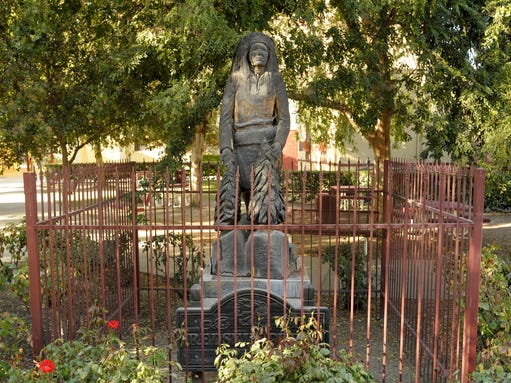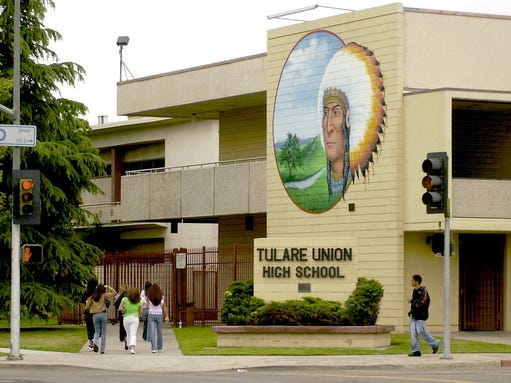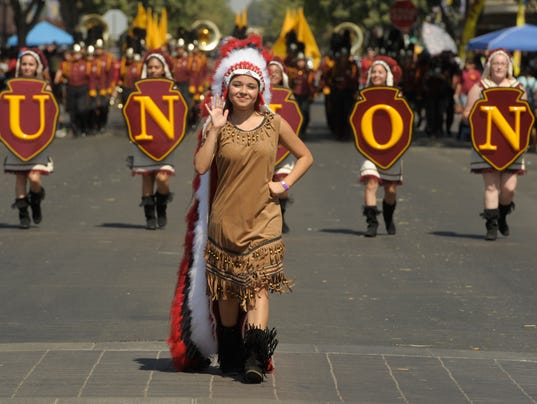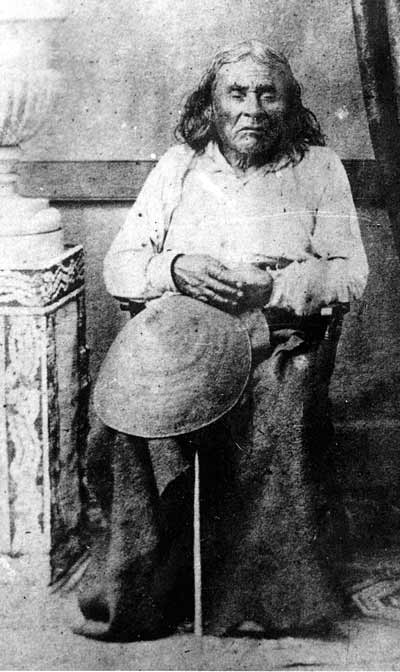Tulare Union High School stands by Redskin mascot amid national firestorm
As controversy over Redskin mascot grows stronger than ever, so does Redskin pride at Tulare Union High School
By Dan Kukla
Where some see beauty and dignity, others see ugly racism.
The school views the centerpiece of its campus and Redskin Pride Park as a masterpiece portraying honor and respect.
"This park is where the pride starts," said Mark Hatton, Union's director of student activities. "This is literally the heartbeat of the campus."



"It's definitely a lesson to be learned when you're a Redskin," Macedo said. "It's a lesson in stewardship and courage and most of all community."
This profound reverence for the Redskin way of life manifests itself in the school's depiction of the Redskin mascot.
You will not find any animated Indian cartoons on campus or letterman jackets. Over time, Union decided to phase out the use of weapons from its imagery and the word "war" from its vernacular. The physical mascot itself is not a big-headed costume, but rather a human likeness of an Indian Princess that Ingram describes as "beautiful" and "gorgeous."
Indeed, from Chief Seattle to the many murals, signs and displays featured around campus, a walk around school grounds turns up nothing but positive and respectful portrayals of Native Americans.



Comment: This particular example of mascotry set me off for a couple of reasons:
1) The school uses a real-life individual--Chief Seattle--as its mascot. The only other example of this that I can think of is FSU's "Chief" Osceola.
2) The photos are so obviously stereotypical, yet writer Kukla claims he sees only positive portrayals.
In response to this article, I posted the following comment:
Chief Seattle
So every Tulare Union depiction of Seattle is false and stereotypical. That isn't what I'd call "positive and respectful." Falsifying someone's history and appearance is the epitome of disrespect.
Then there's the fact that the school "phase[d] out the use of weapons from its imagery and the word 'war' from its vernacular." Given the remaining stereotypes, this isn't some great achievement.
Moreover, it shows the school's underlying belief: that Indians did nothing but fight wars. That's why it chose the word "redskins": because it embodies the Indians' warlike savagery.
Finally, here's the real Seattle:

Does Seattle look anything like the Plains chief in the logos and statue? No.
Note the woven hat he's holding, which is typical of the Duwamish and other Pacific Northwest tribes. Woven hat, not feather bonnet. Not all Indians come from the Great Plains, silly Tulare Union.
To reiterate, Tulare Union's mascot is false and stereotypical. Worse, the school is arguably racist for ignoring the protests and implying that all Indians fit its Plains chief/Seattle/"Redskin" mold. This is yet another Indian mascot that should bite the dust, and quickly.

No comments:
Post a Comment